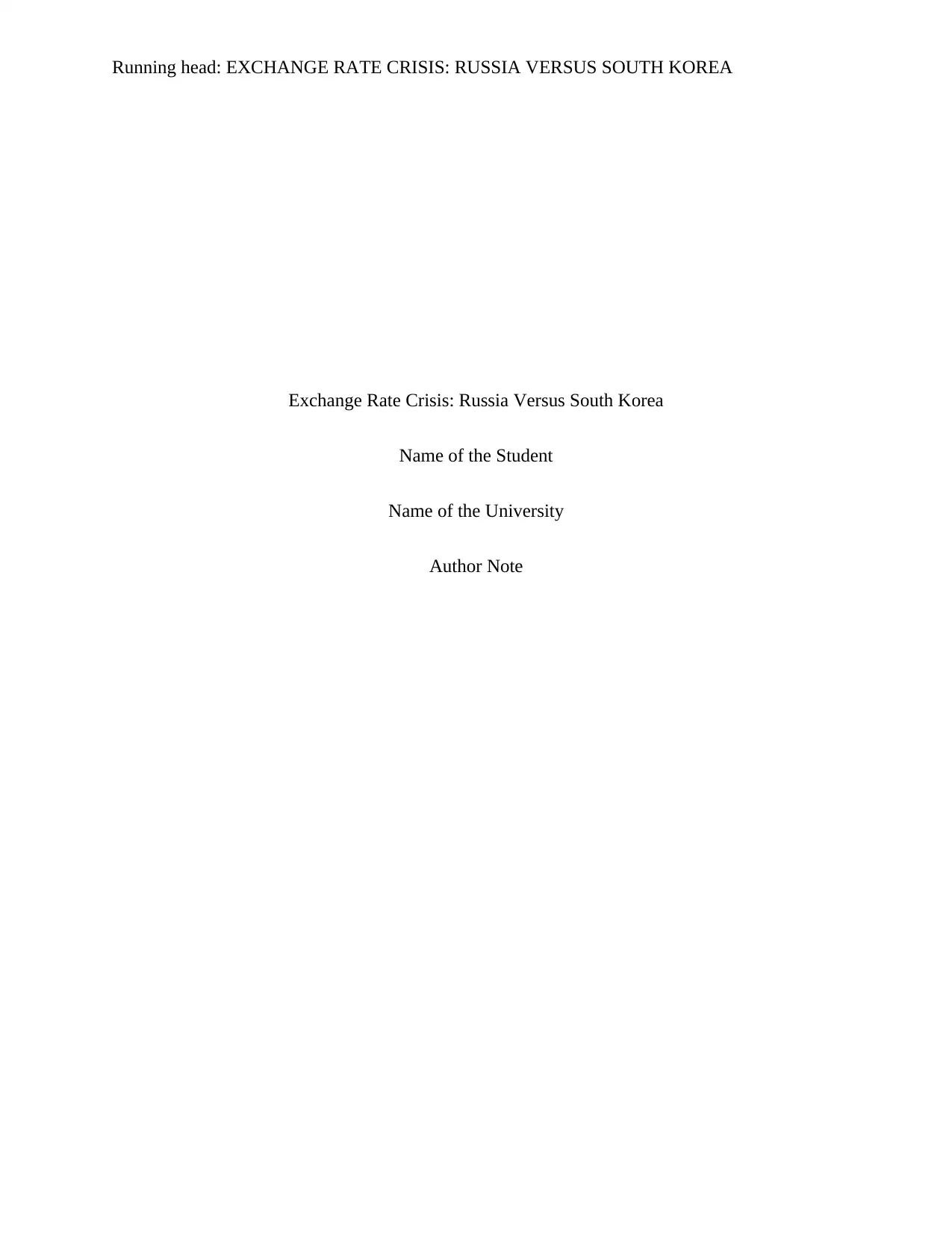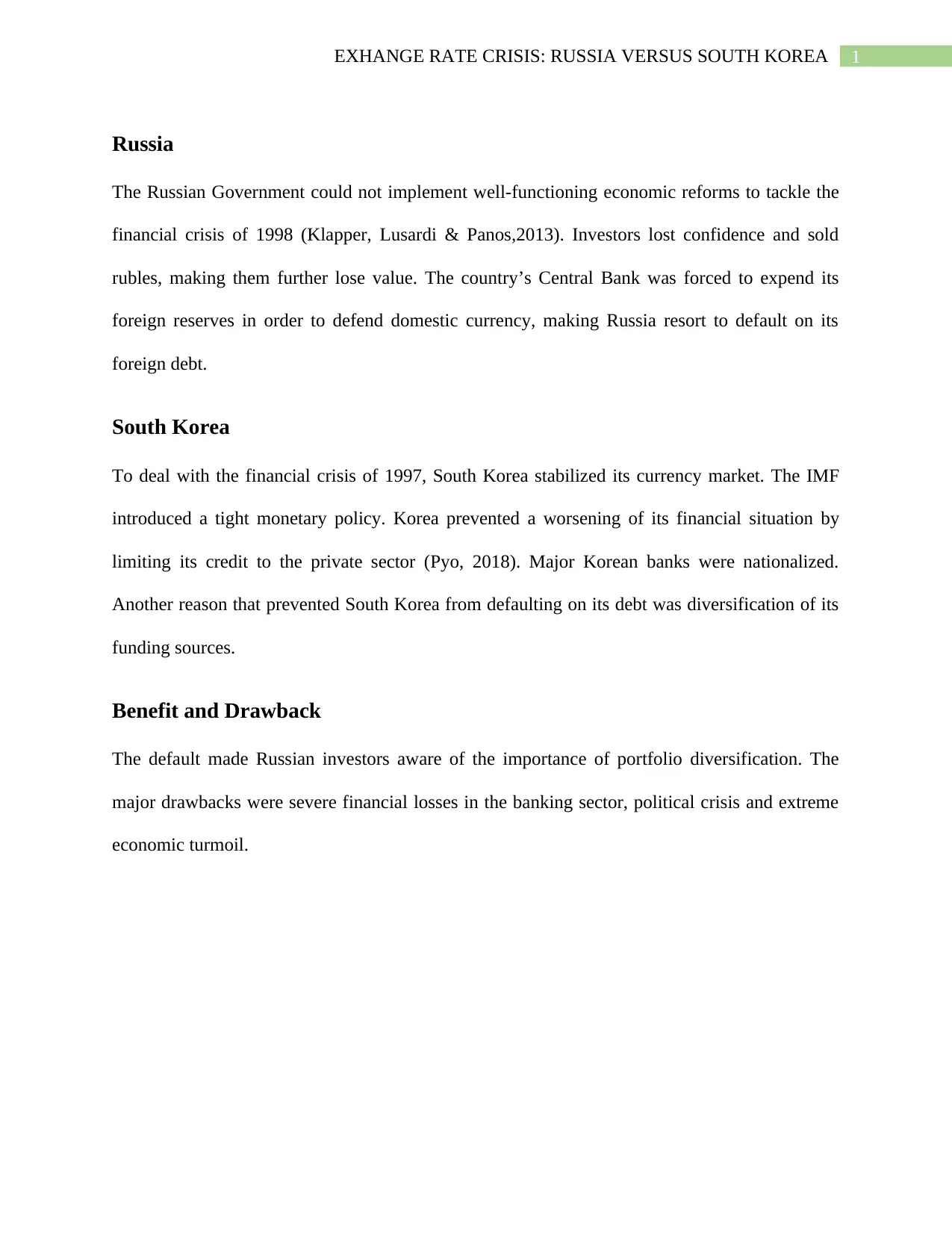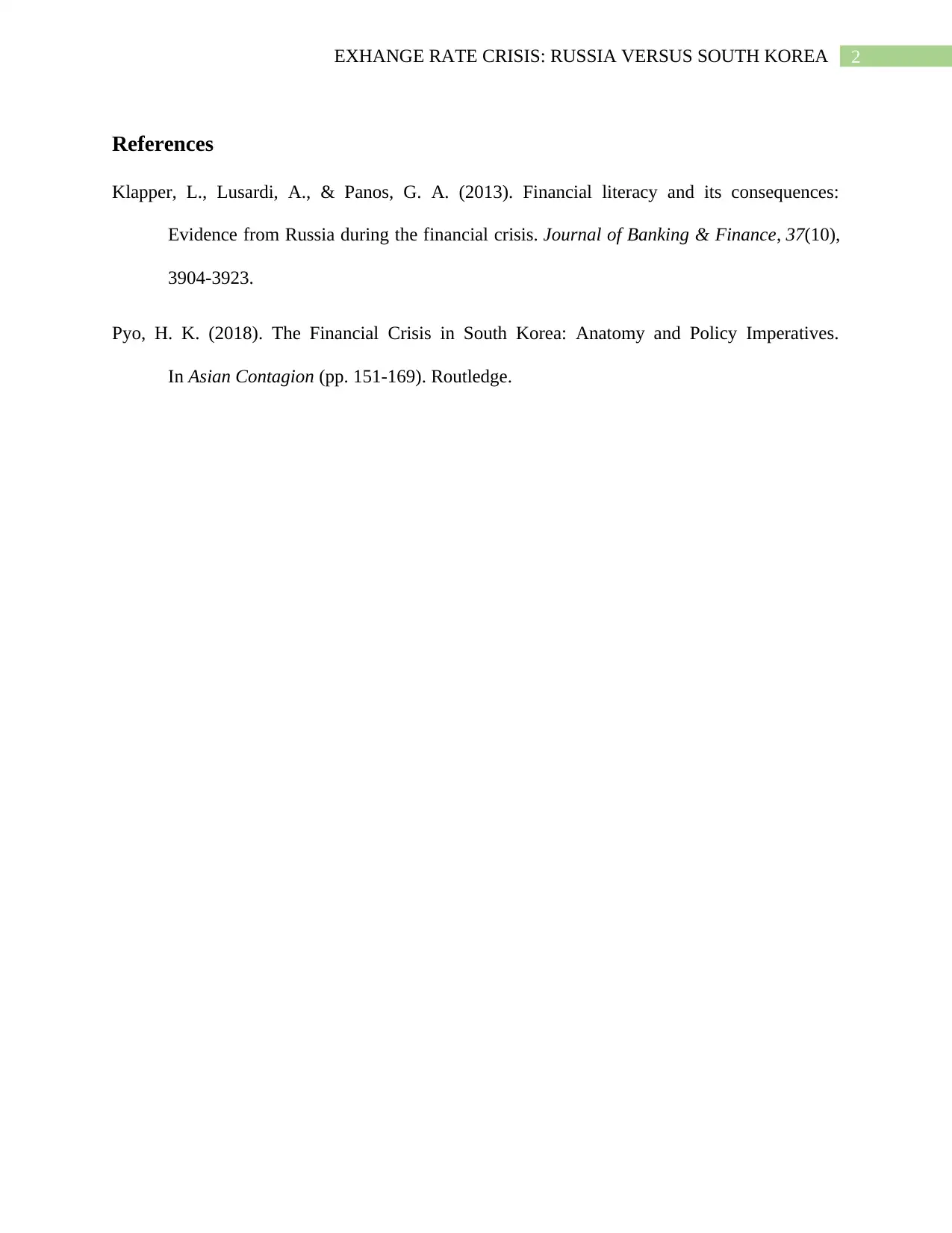Exchange Rate Crisis: Russia and South Korea's Economic Analysis
VerifiedAdded on 2022/11/26
|3
|299
|71
Report
AI Summary
This report examines the exchange rate crises of Russia and South Korea, comparing their responses and outcomes. The Russian government's inability to implement effective economic reforms during the 1998 financial crisis, leading to a loss of investor confidence, devaluation of the ruble, and eventual default on foreign debt, is analyzed. In contrast, South Korea's handling of the 1997 financial crisis, including the implementation of a tight monetary policy by the IMF, nationalization of major banks, and diversification of funding sources, is explored. The report highlights the benefits of these strategies, such as increased awareness of portfolio diversification, and drawbacks, such as severe financial losses and political turmoil. The analysis includes key references and provides insights into the importance of financial stability and effective crisis management.
1 out of 3









![[object Object]](/_next/static/media/star-bottom.7253800d.svg)